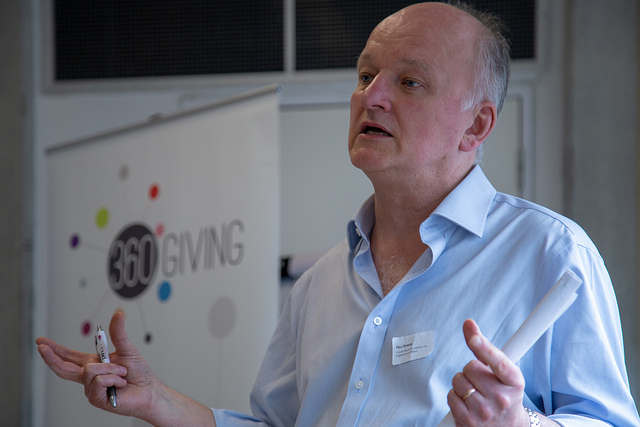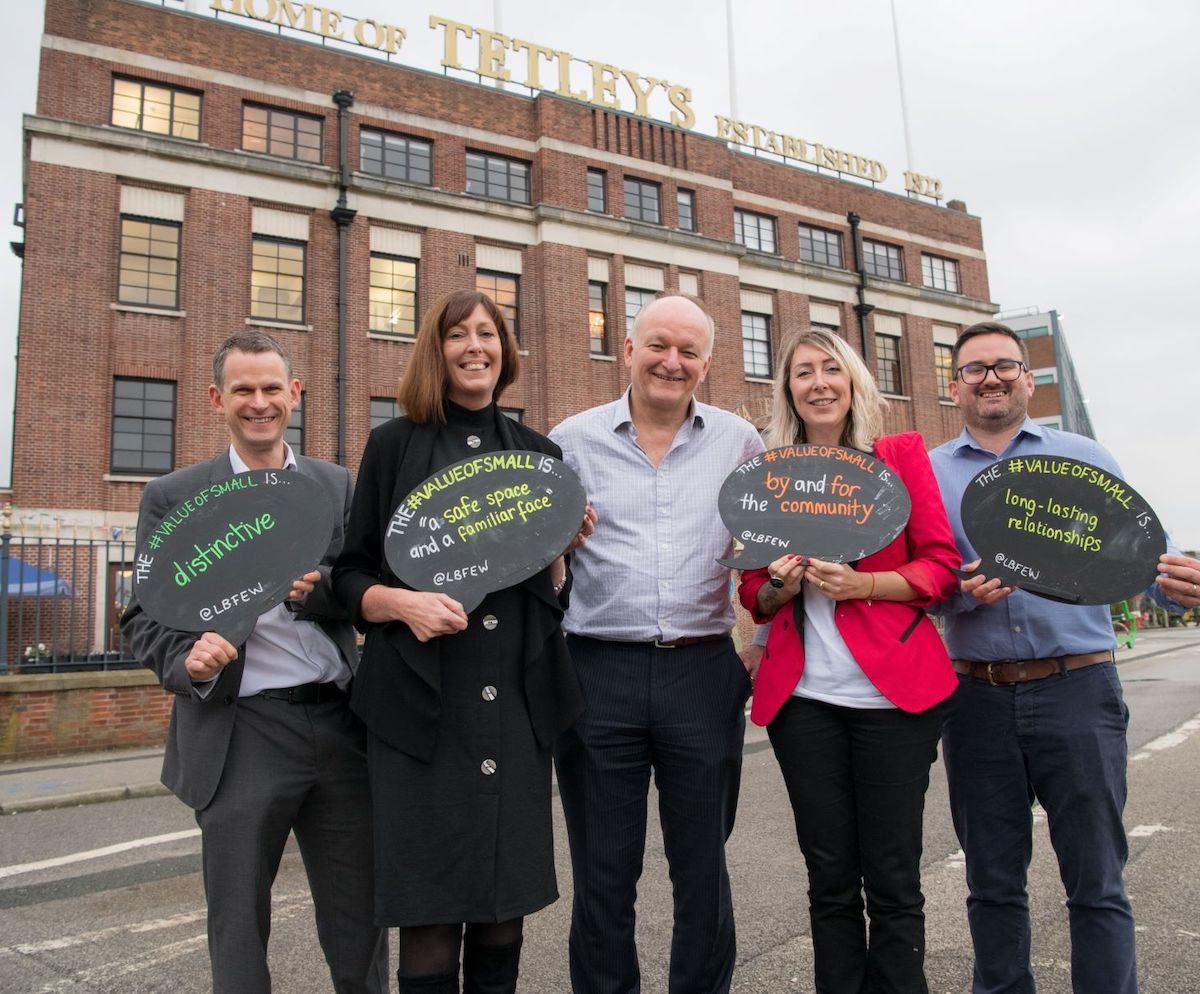Holding ourselves to account
Guest post by Paul Streets, CEO of Lloyds Bank Foundation, following his keynote talk at the launch of 360Insights in March 2019

Paul Streets speaking at the launch of 360Insights
Data is central to our work. We use it to canvas the confidential views of those we fund on how we’re doing; understand what’s going on in their ‘world’; inform our policy and influencing work and decide where, and on what, to focus and evaluate. The arrival of 360Giving a few years ago shed light on how our work compares to other funders’. Their new platform 360Insights takes this further by providing new ways to understand that data.
Thanks are due to Fran Perrin for having the foresight to identify this need and to Rachel Rank and her team for turning that foresight into fact. They’ve attracted more than 100 funders – which often have a reputation for secrecy – to share their data covering over 300,000 grants.
There are many arguments for why funders shouldn’t be transparent. Some suggest it might deter those who would rather retain anonymity. Others would prefer the publicity to shine on the funded, rather than the funder. But it’s my view that transparency is essential and might well become an expectation for funders for three reasons:
First; the ethical one. Foundation income is rightly received and given untaxed but requires a measure of public accountability. Second; it will improve funder practice. In other worlds – notably medical or educational – people worried that public data would change behaviour adversely. But these concerns proved unfounded and data availability is now widely accepted if used appropriately. The public have become sophisticated in understanding the increased data available, while new players have entered the market to help. Which links directly to the third reason; just as funders’ performance will improve, if data is used well, so will the performance of those we fund.
But the existence of 360Giving begs some serious questions of funders and what we demand of our grantees. At the 360Insights launch I mentioned Gemma who runs Basis – a charity in Yorkshire working with sex workers and children who are sexually exploited. Gemma has 17 funders, with only two unrestricted funding streams. She must pitch for the rest and then report on specific projects while monitoring outcomes to meet their requirements. Of her 16 staff, one works full time on meeting the data needs of funders to secure resources, while another works to meet additional requirements for funding reports.

The Lloyds Bank Foundation ‘Value of Small’ event, autumn 2018. Left to right: Duncan Shrubsole, Director of Policy, Communications and Research, Dot Turton, CEO of Recovery Connections, Paul Streets CEO, Gemma Scrire of Basis, Chris Dayson Principal Research Fellow in the Centre for Regional Economic and Social Research
Gemma explains:
“Having worked in larger charities in the sector and in a commissioning team for the local authority, I was shocked to learn how much time was required around ‘the industry of funding’ when I arrived at Basis in 2015. Like many other #smallbutvital charities, we are heavily reliant on trusts and foundations for our income to deliver the services our community needs.
Due to national high-profile cases of child sexual exploitation, changes in sex work policies around the city made it easier to identify and engage with women and young people at risk. While we wanted to respond to this change, our funding picture was challenging. Multiple small pots of funding were ‘stitched together’ to pay for posts over differing time periods leading to instability around staff employment and the support services on offer. Each required a separate risk management and operational response, and the human cost was high in a workforce and community already experiencing trauma.
“I began with a Gantt chart to establish when each funding stream would end, alongside future funding plans and a contingency should we need to cease a service element. For each of those (along with the ‘pipeline’ that reassures our Board of our future existence!) came the investment in funder relationships, while ensuring reporting was completed and our success and challenges communicated to the people who had willingly invested in our services. The chart (three A3 pages in length!) was pinned to my wall for months.
The last few years have seen a welcome shift to multi-year, larger investments (with core cost funding too) that can secure a staff member for the interim whilst we tackle inter-generational issues of inequality and injustice. Smaller pots of funding are now being used for creative projects and things that bring additional value to our people’s experience. We go beyond simply reporting the data our funders require to inspire them with stories of the beneficiaries of our work and the systems transformation that should ultimately render us unnecessary in years to come. On a practical note, I’ve seen and helped develop wonderfully streamlined dashboards of consistent and unified performance data which I hope may become a reality for us and my colleagues in our #smallbutvital charities too.”
Stories like Gemma’s reveal the enormous waste of precious resources in organisations like Basis that are cash and time poor. The availability of 360Giving data and platforms such as 360Insights surely demands that, as funders, we do some long overdue soul searching and review our practice.
After all, shouldn’t we use common data provided by Basis for our due diligence? If that due diligence stacks up, shouldn’t we provide unrestricted funding and trust that Gemma knows far more about how to support sex workers and children who are sexually exploited in Leeds than we do? Shouldn’t we ensure that Gemma is accountable to her Board for performance, not to us, by using the performance data that she provides to her Board for our own accountability?
The collective data paints a rich and powerful picture of the positive difference the grant-making sector is making – but just as we ask our grantees to account for their actions, isn’t it time, we as funders also held ourselves to account for efficiency and effectiveness by comparable standards?
